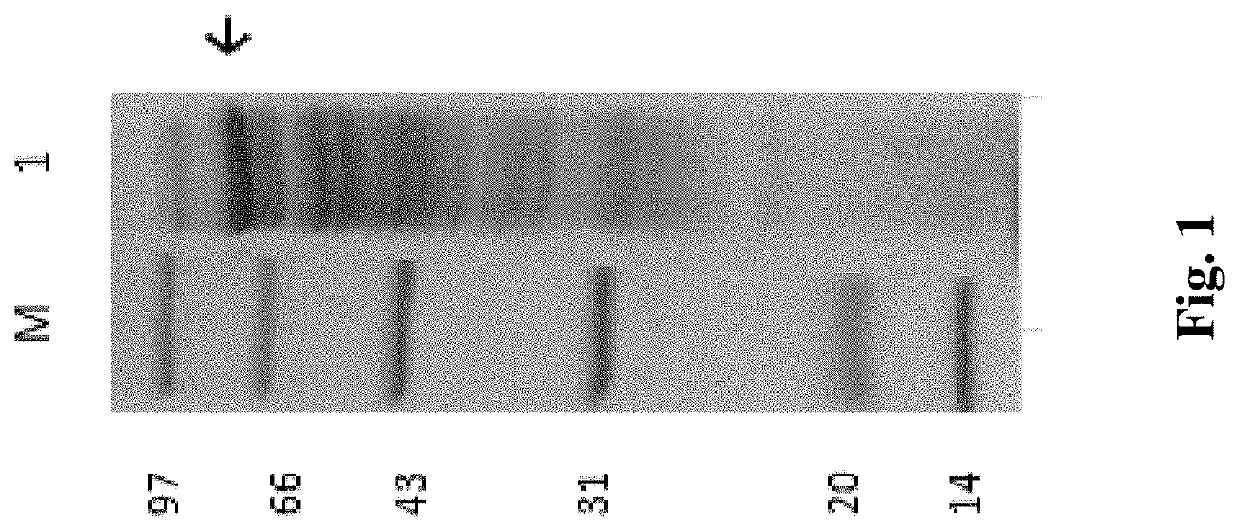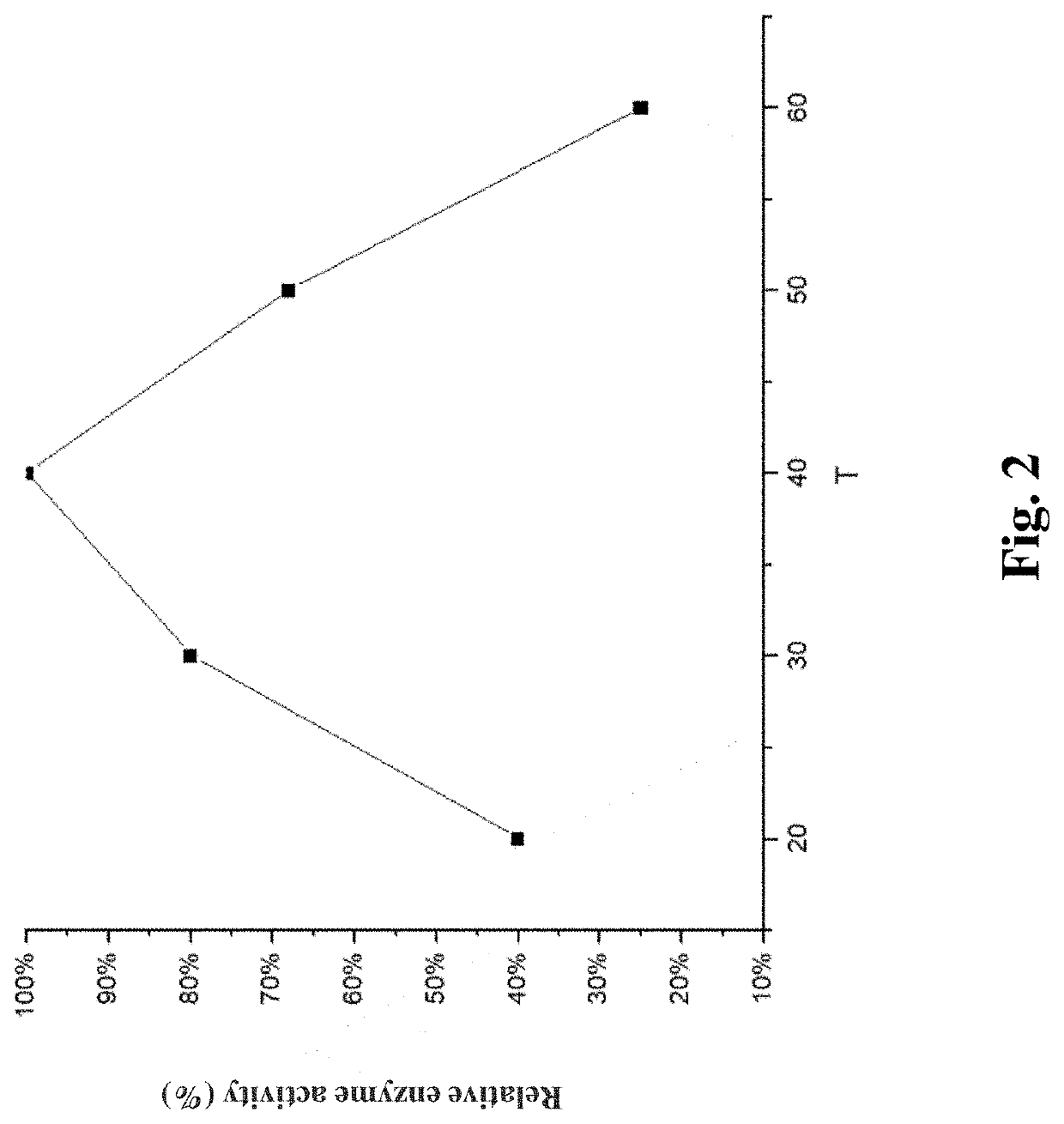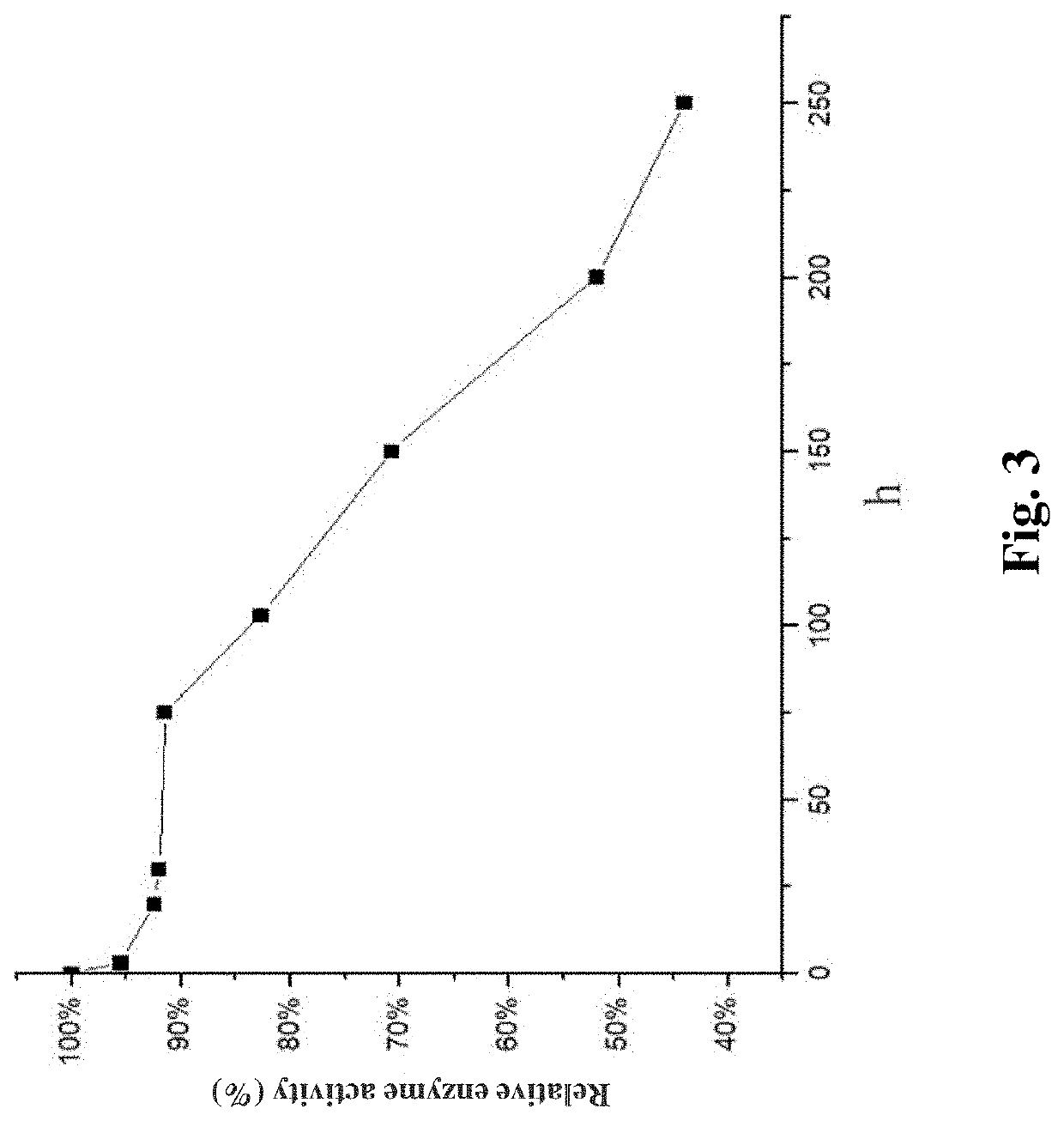Method for preparing resistant dextrin by using a starch branching enzyme and a cyclodextrin glycosyltransferase
a technology of cyclodextrin glycosyltransferase and starch branching enzyme, which is applied in the field of preparing a resistant dextrin, can solve the problems of low production capacity, reduced absorption efficiency of bile salts and cholesterol, and low utilization rate of raw materials
- Summary
- Abstract
- Description
- Claims
- Application Information
AI Technical Summary
Benefits of technology
Problems solved by technology
Method used
Image
Examples
example 3
on of Starch Branching Enzyme in Preparation of the Resistant Dextrin
[0052]Starch was used as a substrate for preparation of resistant dextrin. 5% of 1 mol / L HCl solution was added to starch for high-temperature reaction at 160-200° C. to obtain a pyrodextrin solution, and the content of the resistant dextrin in the pyrodextrin solution reached 40%-45% after cooling and sieving. The pyrodextrin solution was prepared into 200-300 g / L solution. An enzyme conversion was performed by adding an SBE to the pyrodextrin solution. The enzyme conversion was conducted at different temperatures, and it was found that the optimum conversion temperature of a starch branching enzyme obtained from T. fusca WSH03-11 was 35-45° C. By conducting the enzyme conversion under different pH conditions, it was found that enzyme conversion efficiency was the highest at the pH 6-7. By performing the enzyme conversion under different enzyme concentrations and different reaction times, it was found that the opt...
example 6
Successively Adding TfSBE and CGTase on Increasing the Content of Resistant Dextrin in Pyrodextrin
[0060]Starch was used as a substrate for preparation of the resistant dextrin. 5% of 1 mol / L HCl solution was added to starch for high-temperature reaction at 160-200° C. to obtain a pyrodextrin solution with 40%-45% resistant dextrin. 2 g / 100 mL pyrodextrin was used as a substrate to prepare a resistant dextrin product using the optimum catalytic reaction conditions for the TfSBE, that is, a pH value of 6.0-7.0, a temperature of 30-40° C., an enzyme amount of 1000-1500 U / g pyrodextrin and a reaction time of 10-12 hours. After that, 5-10 U / g pyrodextrin of CGTase was added, and the reaction was continued for another 10-12 hours at the pH 6.0-7.0 and 30-40° C. (the CGTase still has about 70% of enzyme activity under this condition). After the reaction was finished, the enzyme was inactivated by boiling water, and the yield of the resistant component at different time points was detected ...
example 7
t of Adding CGTase and TfSBE Simultaneously on the Content of Resistant Dextrin in Pyrodextrin
[0062]The optimum temperature and pH for the catalytic reaction of the CGTase is 40-50° C. and 5.5, respectively. Since the activity of the TfSBE is only about 30% of the optimum activity under pH 5.5, and the CGTase still has about 70% activity under the optimum temperature and pH conditions of the TfSBE, it is possible to add the two enzymes simultaneously under the optimum enzymatic conversion conditions of the TfSBE.
[0063]Starch was used as a substrate for preparation of the resistant dextrin. 5% of 1 mol / L HCl solution was added to starch for high-temperature reaction at 160-200° C. A pyrodextrin solution with 40%-45% resistant dextrin was obtained after cooling and sieving. 2% (g / 100 mL) pyrodextrin was used as a substrate for enzyme treatment. The recombinant starch branching enzyme TfSBE prepared in Example 2 (1000-1500 U / g pyrodextrin) was added with the CGTase (5-10 U / g pyrodextri...
PUM
| Property | Measurement | Unit |
|---|---|---|
| temperature | aaaaa | aaaaa |
| temperature | aaaaa | aaaaa |
| concentration | aaaaa | aaaaa |
Abstract
Description
Claims
Application Information
 Login to View More
Login to View More - R&D
- Intellectual Property
- Life Sciences
- Materials
- Tech Scout
- Unparalleled Data Quality
- Higher Quality Content
- 60% Fewer Hallucinations
Browse by: Latest US Patents, China's latest patents, Technical Efficacy Thesaurus, Application Domain, Technology Topic, Popular Technical Reports.
© 2025 PatSnap. All rights reserved.Legal|Privacy policy|Modern Slavery Act Transparency Statement|Sitemap|About US| Contact US: help@patsnap.com



